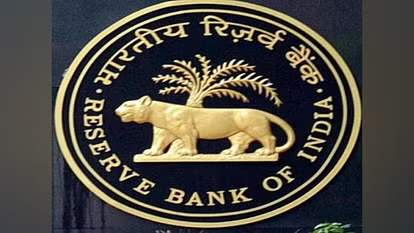
CLAT Current Affairs: RBI’s Expected Repo Rate Cut – Impact on Law & Economy
Why in News?
The Reserve Bank of India (RBI) is expected to reduce the repo rate by 25 basis points (bps) for the first time in nearly five years during the upcoming Monetary Policy Committee (MPC) meeting, scheduled from February 5 to 7, 2025. The repo rate, which influences borrowing costs and economic growth, has remained unchanged for two years. If implemented, this decision will mark the first major policy move under RBI Governor Sanjay Malhotra, who assumed office in December 2024.
This expected rate cut is attributed to declining inflation, slowing economic growth, and global trade uncertainties. The move will significantly impact credit availability, investments, and overall economic stability.
Introduction to Monetary Policy & Repo Rate
Monetary policy plays a pivotal role in shaping the economy by regulating inflation and liquidity. The repo rate, set by the RBI, affects bank lending rates, directly influencing businesses and consumers.
Since May 2022, the RBI had raised the repo rate by 250 basis points (2.5%) to combat inflation, bringing it to 6.5%. With inflation easing and economic growth slowing, policymakers are considering a rate cut to boost credit availability and financial activity.
A repo rate cut will impact homebuyers, businesses, and investors by reducing loan EMIs, thus fostering increased spending and economic expansion.
Impending Repo Rate Cut & Policy Impact
RBI is expected to reduce the repo rate by 25 basis points (bps), bringing it down from 6.5% to 6.25%.
A basis point (bp) equals one-hundredth of a percentage point.
This will be the first repo rate cut since 2020 and the first major monetary decision under RBI Governor Sanjay Malhotra.
Key Reasons for the Expected Rate Cut
Declining Inflation: Consumer Price Index (CPI) inflation fell to 5.22% in December 2024, down from 5.48% the previous month.
Slow Economic Growth: India’s GDP growth forecast has been revised to 6.6% for FY2025, compared to an earlier projection of 7.2%.
Global Policy Alignment: Other central banks have indicated rate cuts due to economic slowdown.
Union Budget 2025-26 & Rate Cut Expectations
Personal income tax cuts and TDS reductions have been introduced to boost disposable income.
The budget aims to encourage higher consumption and economic expansion, aligning with the expected rate cut.
Expected Rate Cut Cycle & Future Predictions
Economists foresee two consecutive repo rate cuts between February and April 2025, totaling 75 basis points.
Another potential rate cut may occur in October 2025, depending on economic conditions.
Global Trade Wars & Currency Impact
🇺🇸 US has imposed tariffs on Canada, Mexico, and China, intensifying trade tensions.
🇮🇳 Rupee depreciated beyond ₹87 per US dollar, affecting monetary policy decisions.
RBI’s liquidity measures include a $5 billion forex swap and open market operations.
Potential Impact of the Repo Rate Cut
Lower Borrowing Costs: Banks may reduce home loan, car loan, and business loan rates.
Lower EMI Payments: Borrowers could save on monthly installments, increasing spending power.
Boost to Business Investments: Companies may take more loans for expansion.
Stock Market Reaction: A rate cut can boost investor confidence, leading to market gains.
Market Lending Rates & Repo Rate Relationship
Since May 2022, the repo rate increased by 250 bps, causing a rise in bank lending rates.
External Benchmark Lending Rate (EBLR) surged by 225 bps in the same period.
Marginal Cost of Fund-Based Lending Rate (MCLR) rose by 175 bps, increasing borrowing costs.
With a repo rate cut, lending rates are expected to fall, benefiting borrowers.
RBI’s Recent Liquidity-Enhancing Measures
$5 billion forex swap to stabilize the Rupee.
₹60,000 crore worth of open market operations to increase liquidity.
₹50,000 crore worth of variable-rate repo operations to ease liquidity further.
Key Financial Terms & Explanations
Repo Rate: Interest rate at which RBI lends to banks.
Basis Points (bps): 1 bp = 0.01% change in interest rates.
Monetary Policy Committee (MPC): 6-member body that decides India’s interest rates.
CPI Inflation: Measures retail price changes, crucial in rate decisions.
EBLR & MCLR: Benchmark rates impacting loan and borrowing costs.
Forex Swap: RBI’s tool to stabilize the Rupee by buying or selling foreign currency.
Conclusion
The anticipated repo rate cut of 25 bps is a crucial policy shift aimed at stimulating economic growth amid declining inflation and global financial instability. This decision will benefit borrowers, investors, and businesses by making loans cheaper and increasing liquidity in the system.
Key Takeaways for CLAT 2026 Aspirants
First repo rate cut in nearly 5 years, likely reducing it to 6.25%.
Falling inflation (5.22%) and slow GDP growth (6.6%) are major reasons.
Global trade tensions and rupee depreciation are impacting monetary policy.
Lower lending rates will benefit businesses, homebuyers, and investors.
Stock markets may rally, supported by improved liquidity and credit availability.




